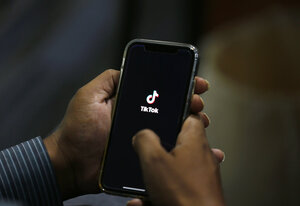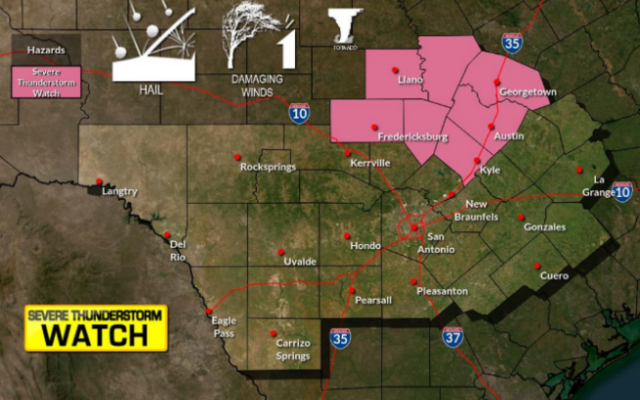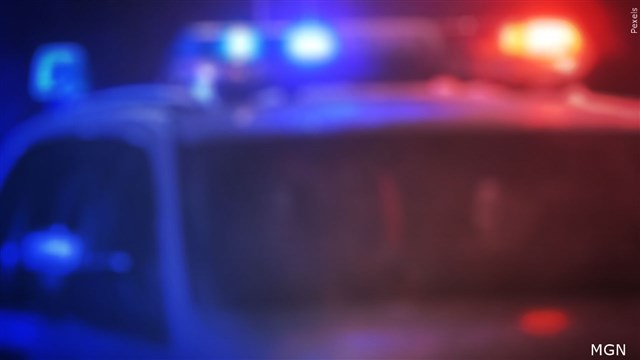As back-to-school nears, the fight over cellphones in classrooms rages on

With students’ mental health top of mind, many teachers, school leaders and state legislators have been pushing for tighter restrictions — saying that after decades of studying technology’s grip on American kids and years of competing for students’ attention, they’ve had enough.
“It’s a losing battle for kids & their brain,” Tyler Rablin, a high school teacher in Sunnyside, Washington, tweeted in May. Rablin, who wrote that he once championed phones in the classroom as a learning tool, now likens teenagers with cellphones to alcoholics at a bar.
“The phone is no longer a passive tool,” he wrote. “Their phone is actively and intentionally working against the goals of learning, of having a productive and meaningful life.”
The push to remove kids’ phones from classrooms has seen some success in the last few years. Between 2015 and 2020, the share of schools that prohibited cellphones for non-academic purposes rose from 66% to 77%, according to data from the Department of Education.
A 2020 study found 96% of the high schools and middle schools surveyed had some kind of cellphone policy, with 78% prohibiting cellphone use during class time. The study also found that across grade levels, 99% of teachers support restrictions on cellphone use, and over half are aware the kids are using their phones during class.
In 2019, California became the first state to enact a bill granting schools state-backed authority to regulate smartphones during the school day. The bill’s significance lies not in its restrictive power — it doesn’t ban cellphones or demand that schools make prohibitive policies — instead, a spokesperson for the senator who wrote the bill said it’s the first legislation to link smartphones with a decline in student mental health, and the first to request that schools look to implement smartphone regulations with students’ health in mind.
Other states, however, have been met with resistance when they attempted more restrictive measures.
In Maine, a bill prohibiting the use of student cellphones during class, lunch breaks and in between classes was rejected by a large margin when it was proposed in 2019.
“There seemed at that time to be no appetite to even consider the proposal,” state Representative Heidi Sampson, who sponsored the bill, told CBS News in an email. “Some felt it was an unrealistic expectation to ban them in schools, ‘cellphones are here to stay, get used to it.’ Most ignored and dismissed evidence for the concerns.”
That same year, Arizona and Utah also tried and failed to enact some level of cellphone policies for schools, according to EdWeek.
The Nebraska state legislature introduced a bill in January 2022 that would have had students place their phone in a clear, individual storage compartment at the entrance of the classroom for the entirety of the class. The bill was rejected in April. Pennsylvania introduced a similar proposal at their General Assembly in July.
Maryland has gone a different route: A bill seeking to create a task force to study the effects of cellphones on students and teachers. That, too, was struck down when proposed in 2019. But state Senator Joanna Benson, the bill’s sponsor, told CBS News she plans to speak with teachers, update the bill and reintroduce it when the congressional session reconvenes in January.
Opposition to restrictive policies has come audibly from parents and students who want access to each other in case of an emergency. Mass shootings at schools, such as those in Uvalde, Texas, and Parkland, Florida, have only bolstered those concerns.
“I feel extremely strong about cellphones being allowed so the children have access to emergency services or their parents in the event of a catastrophe,” Bruce Knell, father of two children in the Lander School District of Wyoming and a Casper city councilman, told CBS News. “I feel more strongly as a parent than I do a politician.”
But Ken Trump, the president of National School Safety and Security Services, says that a child’s use of a cellphone is rarely the best course of action in an emergency.
“I understand that a cellphone can meet the emotional needs of a parent and child in the moment,” he said, “but a child’s only job in a lockdown situation should be to stay quiet and give 100% of their attention to the educator.”
Trump, who leads safety trainings in schools all over the country, acknowledges the significance of 911 calls that came from students with cellphones inside the school during the shooting in Uvalde. But he said if the burden of dialing 911 is falling to a child, it’s because there’s a breakdown of crisis response at a higher level.
“By all accounts, the situation at Uvalde did not follow a number of best practices,” he said. “We have protocol and trained crisis teams for times like these.”
But the concerns aren’t just about school shootings. In February, students at Torrington Middle School in Connecticut staged a protest after the school board voted to restrict their use of cellphones, The Associated Press reported. The administration dismissed the students for the day after students pulled fire alarms and police were called to the scene.
That day, Michael Mosel, who identified himself as the father of a Torrington student, started a petition against the policy, calling it a waste of money that could be better used for other educational purposes. It’s since received over 600 signatures.
“The students are fed up with administrators and the board of education constantly overlooking and ignoring the basic needs of our students,” Mosel wrote in the petition. He emphasized that the school board was trying to “restrict the use of phones while in use, regardless of the situation. (e.g. medical, mental health, emergency, etc).”
Jake Langlais, superintendent of Lewiston public schools in Maine, is sympathetic to student and parental anxiety — but says there needs to be a solution to the daily problems caused by phones in the classroom.
“Cellphone use and social media are the number one distraction during the school day,” he told CBS News. “I understand the sense of security that a phone can provide to a parent, but school should be a place for learning and becoming who you are. Constant phone access is proving to run contrary.”
Lewiston is one of many districts trying to strike a compromise. The Crane School District in Missouri, which said it will prohibit cellphones, smart watches, earbuds and digital cameras in the coming year, is installing a new phone system over the summer to ensure that every classroom can make outgoing calls.
Cocopah Middle School in Arizona told CBS News that it had students and parents sign a “technology contract,” which includes a declaration that parents will not text their child frivolously during the school day. Bronxdale High School in New York uses the increasingly popular Yondr pouch, which magnetically locks phones like individual burritos — allowing the student to keep their phones with them but rendering the devices useless. In Fairfax County, Virginia, high school students can use their cellphones in between classes and during lunch periods.
The Buxton School in western Massachusetts just banned smartphones for both students and teachers, but allows “dumb” phones like flip phones and internet-accessing Kindles and tablets.
“The habits of mind that smartphones have introduced and, at this point, essentially demand, are diametrically opposed to the educational project of a place like Buxton,” Franny Shuker-Haines, Buxton’s director of outreach, told CBS News. “Our purpose is to give students the chance to become self-aware stewards of their community, and smartphones constantly work against that essential mission.”
You Might Also Like



